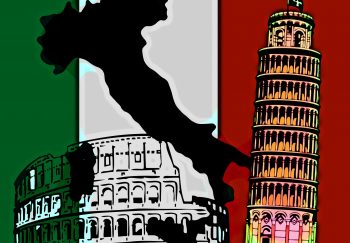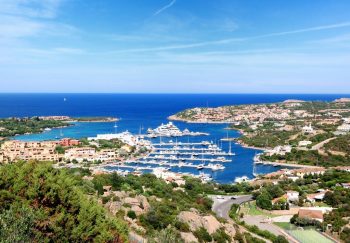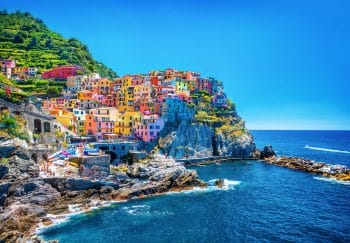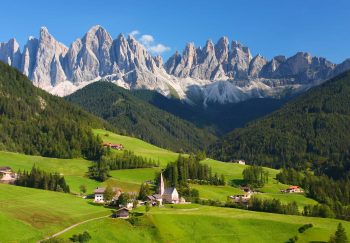It’s easy to include Naples in an Italy itinerary because of its proximity to Pompeii and Amalfi Coast. Many travelers treat it as a day trip and leave from Sorrento or Rome. They’ve heard negative reviews about the Campania capital, so they don’t think it’s a good idea.
Yes, Naples is more difficult to love than Positano and Siena. And? It is definitely worth spending a few days in this city to fully explore all its treasures and eat the best pizza in the country.
My top spots in Naples are what I like, but you may have different interests. This is a list of top Naples attractions so that you can create your own list. Because I think they add an interesting dimension to travel memories, I have also included some of the strange attractions in Naples.
It is your job to use the list as a guideline. This is not a complete list. You can create your own priorities list of things you want to see and do in Naples. Although you won’t be able to complete the entire list, you will make a good starting point and you can continue where you left off next visit.
My will help you plan your trip.
The Top Attractions in Naples
- Historic Centre – The whole historic center of Naples has been designated a UNESCO World Heritage Site. This includes the Spaccanapoli street, which runs straight through the middle.
- National Archaeological Museum A visit to Pompeii or Herculaneum should also be combined with a trip to the National Archaeological Museum. Here, most of the mosaics and frescos from the excavations are on view.
- Napoli Sotteranea There are daily guided tours by Napoli Sotteranea, which means Naples Underground.
- Capodimonte Museum– This huge, hilltop palace-turned museum is where you should go to see the most important artistic works of Naples, such as those by Caravaggio and Titian.
- Castel dell’Ovo – Naples’ oldest fortress, dating back to the 12th century. Its funny name (Castle of the Egg), comes from a legend that Virgil, a Roman poet, hid a magical egg under the castle’s foundations. Legend has it that the egg must not break in order to keep the castle and the city safe. Virgl was alive long before the castle was constructed.
- Castel Nuovo This castle was built as a fortification in the 13th century. Later, it received more frilly decorations like the triumphal arch from the 15th century between two towers. Although there is a museum within, most people just want to take photos of the stunning exterior.
- Castel Sant’Elmo This castle built in 13th century is perched on the Vomero hills and affords spectacular views of Naples, the bay and Mt. Vesuvius towering above everything A museum is located in a part of the fortification.
- Teatro San Carlo is a Naples opera house that has been in continuous operation since 1737. Performances in the sumptuous red-velvet-and-gilded theater include opera and ballet.
- Chiesa del Gesu Nuovo This church was originally designed to be a palace. Its strange facade was intended for the palace. The exterior is almost a sign of a baroque church, but the interior is elegant and Baroque.
- Santa Chiara Santa Chiara is a monastery, church and an archaeological museum that can be found on the same square as Gesu Nuovo. The main attraction is the majolica tile-covered cloister.
- Duomo The cathedral of Naples, also called the Duomo in the 13th Century, is the main church. It is stocked with the blood of San Gennaro, the patron saint of Naples. The blood is given to the public twice a year. If the blood turns to liquid, it’s believed to be a miracle that will bring good news to Naples. The city will be cursed if the blood remains dry.
- Certosa di San Martino The building is located on the Vomero Hill near the Castel Sant’Elmo. It is home to one of the most extensive collections of Neapolitan Nativity Scenes – known as presepe in Italian – in the world.
- Piazza del Plebiscito – The enormous Piazza del Plebiscito has the Pantheon-esque Basilica di San Francesco di Paola at one end and St. Peter’s Square-ish colonnade arms reaching out to embrace you. It can be used for concerts, concerts, special events and protests.
- Basilica di San Francesco di Paola This huge church that anchors one side of the great Piazza del Plebiscito was built in the early 19th-century and is not intended to be a Church.
- Palazzo Reale The opposite end of Piazza del Plebiscito to the Basilica di San Francesco di Paola is where Naples’ Royal Palace can be found. Its arches are filled in with statues representing the Kings of Naples. The former royal apartments can be viewed inside, as well as the throne and throne rooms.
- Galleria Umberto I– If you’ve ever been to Milan, then you might recognize the Galleria Umberto I in Naples. It is an arcaded shopping mall with a glass roof.
Guided Tours of Naples
-
Context Travel Walking Tours to Naples -
Viator Tours to Naples -
Select Italy Tours from Naples
-
Walks of Italy Tours
Weird Attractions in Naples
- Capella Sansevero The Capella Sansevero’s upper floor houses one of my favorite sculptures, the Veiled Christ by Giuseppe Sanmartino. If you’re looking for something to do with the Veiled Christ by Giuseppe Sanmartino, it’s worth a visit. It’s downstairs, in the tiny room below the chapel, that things get a little weird. Two “anatomical models”, built in 18th century, depict veins and arteries from human skeletons. Although the bones are real, the veins and blood vessels are made of metals, silk and wax.
- San Lorenzo Maggiore The church is a great place to visit. But the best part of the church’s basement is where you can find the most beautiful parts. San Lorenzo Maggiore, built over an ancient Roman marketplace in the 13th Century, is still standing. It’s possible to walk along an ancient Roman street and peek into old Roman shops. It’s awesome.
- “Christmas Alley” – Naples is known for its nativity scenes. It’s Christmas all year round on Via San Gregorio Armeno. There are many shops that sell everything you need to make your own presepio, including the backdrop and each individual figure. Hand-made from wood or clay, the best figures are unique and beautiful. To find athletes, musicians, or politicians, look for them.
- The Secret Cabinet at Archaeological Museum– One room in Archaeological Museum is locked and closed at all times. It is known as the “Gabinetto Segreto,” also known as “Secret Cabinet” and contains ancient Roman erotica from Pompeii, Herculaneum. It was used to decorate brothels. However, much of the decor was acceptable for use in homes. Before you visit the ticket window, make sure to ask about its opening hours. If it is not open during public hours, you can request to have it opened for you.
- L’Ospedale delle Bambole – Since 1800, the fine people at this doll hospital have been repairing beloved toys and restoring them. It is accessible to the public by appointment. The workshop is equipped with small hospital beds and all other necessary equipment. It is simply delightful.
- Catacombs The Catacombs at San Gennaro are believed to date back to the 3rd-4th centuries and include the former tomb of San Gennaro. Only guided tours are allowed.
- Piazza Belllini – Until you see down through the hole at one end, there isn’t much to this tiny piazza. These aren’t ancient Roman ruins, although there are many under Naples’ streets). They are ancient Greek ruins that date back to the 6th Century B.C.E. when Neapolis was established.











